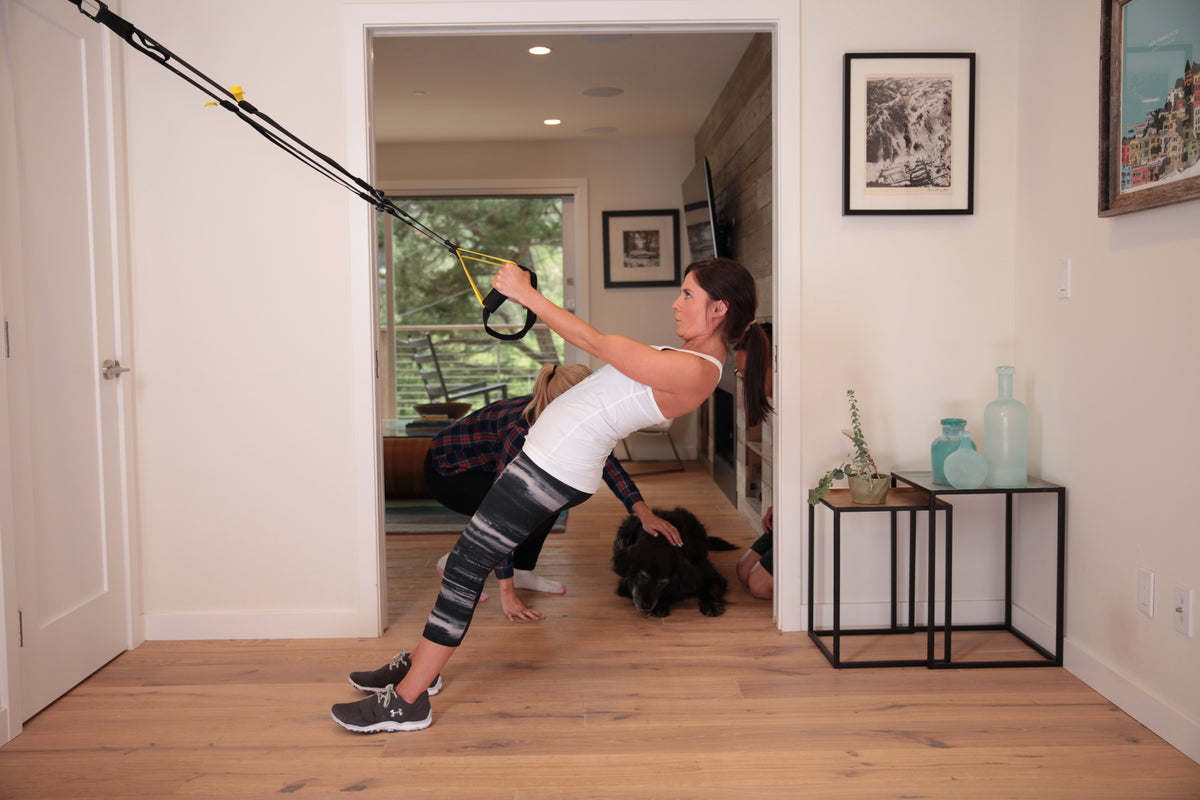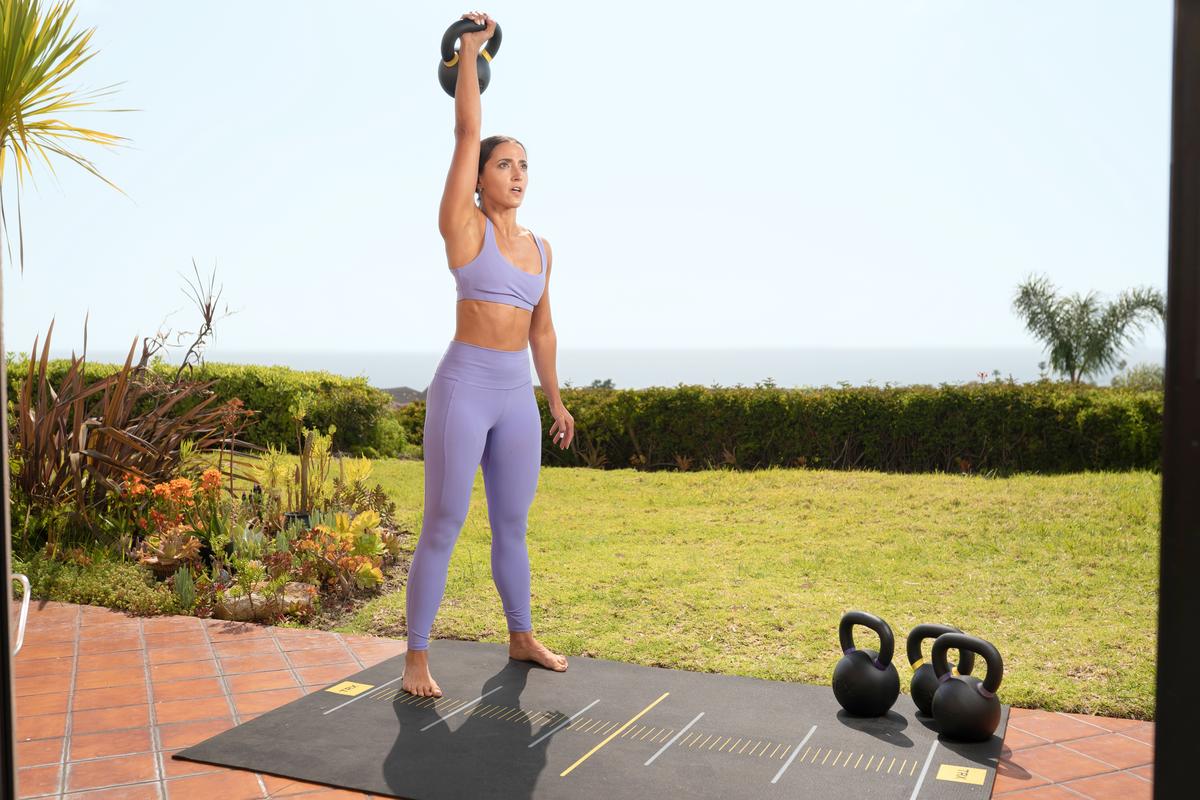If you’re not breathing, you’re dying. It’s that simple.
You breathe 20,000 times a day, and the quality of each of those breaths affects every system in the body, whether you’re sleeping, sitting, or exercising.
Why Proper Breathing Matters
Breathing is unique as it is regulated by both the conscious (somatic) and subconscious (autonomic) aspects of the nervous system. The subconscious controls your breathing throughout the day without any conscious effort, while the conscious mind allows you to intentionally control your breath.
This dual nature of breathing serves as a bridge between the body and the mind. By consciously regulating your breath, you have the power to influence both your physical and mental states, enabling you to achieve optimal performance at the gym or during your home workouts.
It's time to start paying attention to your breathing while at rest or during exercise. Not only is there a proper way to breathe during rest, but the type of exercise you engage in also determines the appropriate breathing technique to use.
Diaphragmatic Breathing
To ensure effective oxygen exchange in your lungs, it is helpful to practice diaphragmatic breathing, also known as belly breathing or abdominal breathing. This technique involves using your diaphragm to breathe, allowing for a deeper and more efficient breath cycle.
During exercise, diaphragmatic breathing has multiple advantages. It activates your core muscles, aiding in stability and control. Additionally, it ensures sufficient oxygen delivery to your muscles, reducing the likelihood of fatigue and cramping.
To practice diaphragmatic breathing, follow these steps:
- Lie on your back on the floor, with your knees bent.
- Place your right hand on your upper chest and your left hand just below your rib cage.
- Inhale slowly and deeply through your nose, directing the air towards your lower belly. Notice that your right hand remains still, while your left hand rises as you inhale.
- Engage your abdominal muscles. As you exhale through your mouth with pursed lips, allow your abdominal muscles to gently fall inward. You should feel your left hand, positioned below your rib cage, returning to its original position once you have fully exhaled.
Proper Breathing for Strength Training
Proper breathing with strength training can positively impact your fitness goals. Just as you want to focus your body on good form, you’ll want to train your lungs on proper breathing while lifting free weights.
You want as much stability as possible when lifting. Exhaling during the concentric portion of a lift and inhaling during the eccentric portion is recognized as the best breathing method for strength training. When you exhale, you’re increasing your core engagement, which gives you more core stability.
You want to engage your core for the controlled lift of the weight. For example, when doing a YBell Bicep Curl, the concentric portion is when you’re lifting the YBell toward your shoulder. The eccentric part is when you lower the YBell back to your starting position.
Proper Breathing for Weightlifting: Valsalva Maneuver
The Valsalva maneuver is a breathing technique that helps to slow your heart. It relaxes your heart’s electrical system and is especially helpful when your heart is beating too quickly, making it a popular breathing technique for weightlifting and powerlifting.
In the Valsalva maneuver, you’ll take in as much air as possible at the start of your lift, then bear down with your core and abdominal muscles. Bearing down braces your core for stability to protect your spine, and gives you the force to drive through and lift the barbell with maximum power.
Practice Valsalva breathing exercises while lying down or sitting down. As with all exercises, you should consult your physician about proper breathing and training for your physical condition.
- Take a deep breath and hold it.
- Pinch your nose.
- Close your mouth.
- Bear down hard, like you’re having a bowel movement.
- While bearing down, try to exhale like you’re trying to inflate a balloon.
- Maintain this for about 10 to 15 seconds.
Proper Breathing for Cardiovascular Exercise: Measured Breaths
Unlike strength training, you should be focusing on consistent breathing during a cardio workout. This means having measured breaths that are even on your inhale and exhale. These consistent breaths will help you to dilate your blood vessels and increase the oxygen levels your blood receives.
Since cardio workouts tend to focus on endurance (biking and running, for example), measured breathing also helps you establish a measured pace. If you’re a long-distance cyclist, you can breathe in and hold for five pedals and exhale for five pedals. If you’re a runner, a 2:2 rhythm works well. Consistent breathing patterns also help slow down muscle fatigue by ensuring that your muscles receive the oxygen they need.
Much like diaphragmatic breathing, you want to inhale deeply through the nose and exhale fully through the mouth.
Proper Breathing for Interval Training: Quick, Measured Breaths
The high-intensity workout style of Tabata or HIRT training makes your body want to take in oxygen as quickly as possible. That desire causes many athletes to make the mistake of breathing in through their mouths and holding. The problem with breathing this way is that it limits the amount of oxygen your blood can receive.
Much like cardio workouts, interval training should use measured breaths. The big difference is taking quick breaths at a 1:1 rhythm.
Proper Breathing for Mobility Exercise: Deep Breathing
Mobility training focuses on achieving a full, unrestricted range of motion in your joints. Extending your range of motion and elongating your breath go hand in hand. Deep breaths help you mobility by releasing muscle tension.
If you regularly practice yoga or static and dynamic stretching, you’ll find that coaches and instructors will tell you to take long, deep breaths for a count of five or six seconds and to exhale for that same count.
Breathing Exercises for Relaxing the Nervous System
Think of your most profound relaxation at one end of the spectrum, and your peak physical and mental exertion at the other. Breathing can be the mechanism that lets you take control of your experience and glide smoothly along that spectrum. Your state of calibrating perfectly with each situation you are in and the task you need to do, which is how your body can control your breathing with exercise or while meditating.
You can use breathing to calm the mind. Everyone has heard the phrase “Calm down and take a deep breath.” Archers and shooters use the aspect of breathing to the level of being able to calm their minds and still their bodies. This technique allows them to loosen the arrow or pull the trigger in the pause between their heartbeats.
This exercise has the incredible effect of calming the mind. It also develops coordination and connection to the diaphragm.
Breath 1: *
- Inhale for a count of 3.
- Hold your breath for a count of 12.
- Exhale for a count of 6.
Breath 2: *
- Inhale for a count of 4.
- Hold your breath for a count of 16 (or as close as you can comfortably get).
- Exhale for a count of 8.
Breath 3: *
- Inhale for a count of 5.
- Hold your breath for a count of 20 (or as close as you can comfortably get).
- Exhale for a count of 10.
*This exercise involves holding your breath, which poses a risk of getting dizzy or fainting. Only do this exercise while sitting down in a comfortable, supported seat. Never do it while in water or operating a vehicle or heavy machinery. Use a count for these breaths that feels comfortable to you without any strain or force.
Breathing Exercises for Energizing the Body and Mind
Kapalabhati breathing, or breath of fire can be used to energize and stimulate the system — think of a weight lifter before a maximum lift or boxers and MMA fighters before they enter the ring. Their breathing will occur in quick, little bursts to energize the body. Then often, they will take a long, slow deep breath to calm their mind — putting them in “the zone” for peak performance.
Mastering both long, slow deep breathing and short, sharp burst breathing gives you the ability to regulate your body and mind up or down at will.
- Start walking at your normal walking pace.
- When your right foot hits the ground, take a quick sip of air.
- When your left foot hits the floor, do a short exhale.
- Keep this breathing going as you walk — inhale your right foot, exhale your left foot.
You will find that this breathing cycle is much shorter and faster than your regular breathing. Walk for 100 meters or so and see how you feel. You most likely will find that you feel more energetic and more alert.



